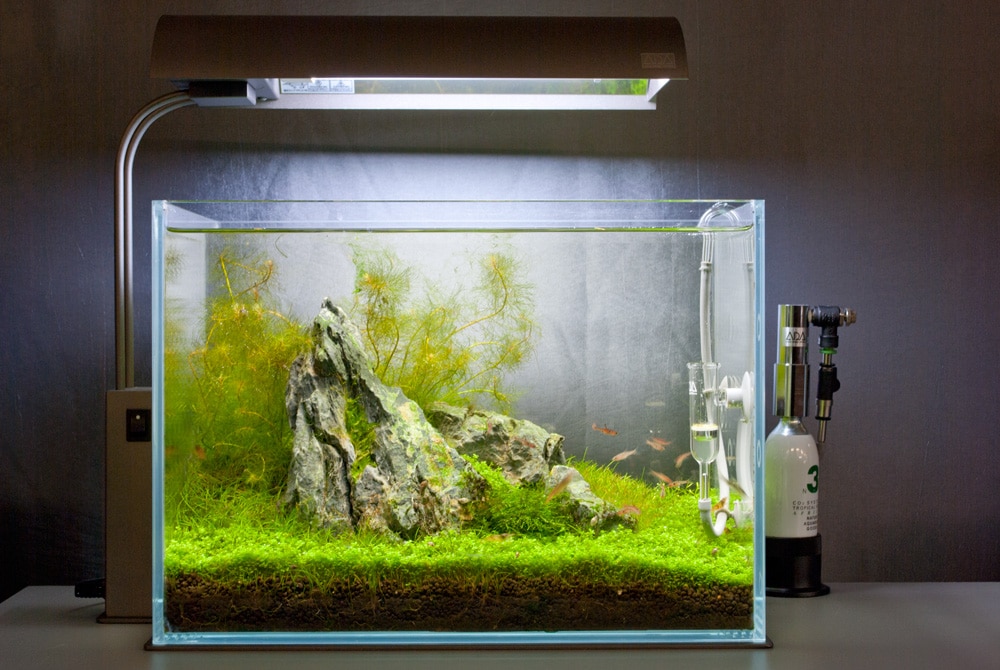
Aquascapes, like all art forms, have a plethora of rules of guidance and application. These rules exist to guide us towards success, and often succeed in doing so. But remember: rules exist only to guide, and a skilled artist can actually enhance their work by bending or breaking the accepted rules if done so in just the right artistic manner: aquatic artistry is no different.
*Update* There is now a new ‘Linear Layout’ style created by James findley. Read about it here »
This article will talk you through the basic ideas of composition and design, highlighting the rules along the way and helping you learn to apply and break those rules to gain the artistic effect you desire, whilst maximising the beauty and impact of your design. First, we will examine ‘The Golden Ratio’ and how to create perspective in an aquarium, before looking at some common aquarium layouts.
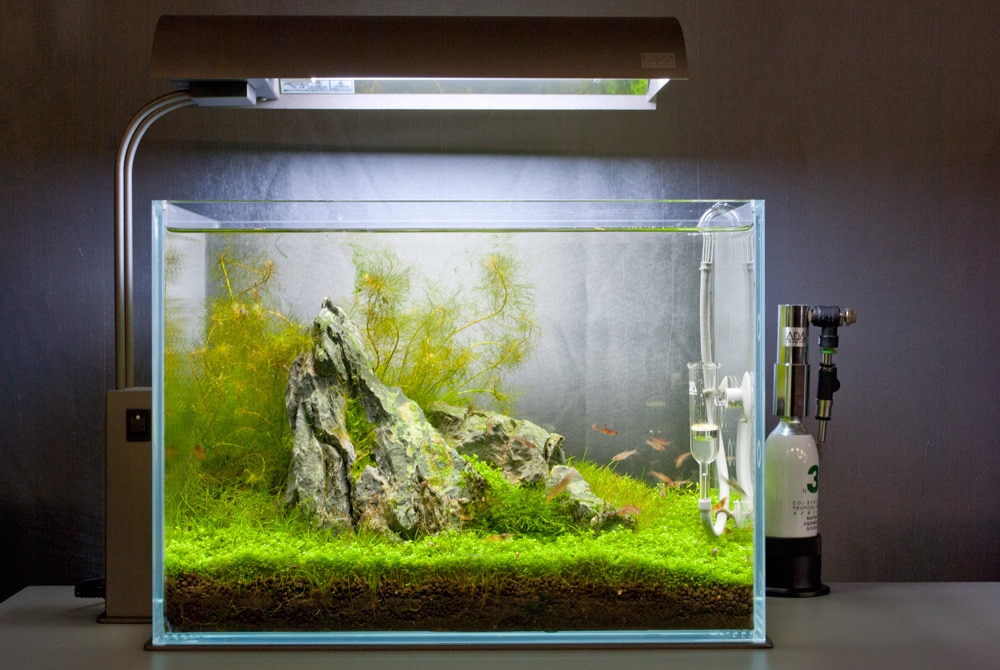
Aquascape No.1 from the ‘Triptych’ Trio by famous aquascaper James Findley demonstrates the effectiveness of The Golden Ratio.
Working with ‘The Golden Ratio’ and the rule of thirds
The Golden Ratio was realised by the ancient Greeks and has been used in all art forms for thousands of years. It provides a guide to achieve the perfect balance within a work of art, or any endeavour that involves placing objects in a space. It can be simplified into the rule of thirds which doesn’t have the exact same ratios but is easier to implement when composing a two dimensional layout such as an aquascape from one viewing angle- for example the front of the tank.
How to use it
Imagine that there are four lines (two horizontal and two vertical) running through your tank, splitting it into nine equal sections. Wherever the lines cross is a golden focus point for your aquascape, and marks where you should consider positioning prominent features like main stones, wood shapes or bold/red plant species. The same process can be done when considering planning the height of plants and hard-scape; place the focal points at 1/3 or 2/3 of the height of the tank, and remember to consider the height that your plants will grow to. You can use it to plan the overall scape of your tank, for example you can choose to have 1/3 planted and 2/3 negative space, or vice versa. There are almost an infinite number of combinations to play with, and all can help you achieve stunning results.
Breaking the rules…
Remember that not all of the rules must be followed all the time. Whilst it may be advisable for beginners to stick more stoically to the rules of composition, a focal point that breaks the rules will demand attention in the most commanding manner by bringing tension and interest to the scape, resulting in a truly breathtaking effect.
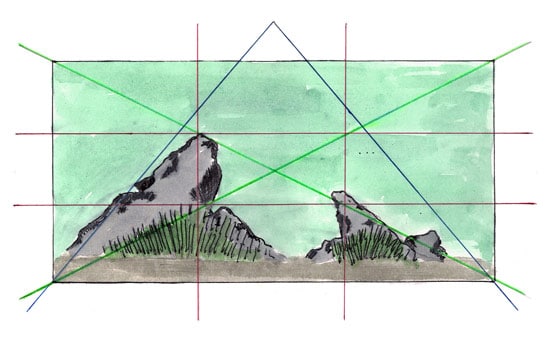
Green and Blue lines – work with triangles
Creating Perspective
This can be one of the greatest challenges in an aquarium as aquariums often do not have enough depth (from front to back) to give a deep enough sense of perspective. This can be achieved with careful planting and positioning of hardscape, and the use of The Golden Ratio helps with this to no end.
The problem…
A common mistake when positioning hardscape is to place stones or wood in a very unnatural, straight line from left to right. This results in a flat, two-dimensional image.
The solution…
To avoid this, imagine your tank as consisting of several images, or screens, layered one after the other from the front to the back of the tank, each with a small gap in between, so that each image is slightly further away from the first. Make sure that when you place your hardscape, you place it in a variety of ‘screens’, so that it spans a variety of points in the depth of your tank. Some pieces of hardscape can share the same ‘screen’, or point of depth, but the key is to create points of perspective from the the front, and these points should be the lowest, to the back where they will be the highest. Like The Golden Ratio, this is a guide, and only a guide, to creating a good sense of perspective within the aquarium. The more experienced artistic eye will learn to manipulate the rules and use and break them where desired to create a truly beautiful, individual scape.
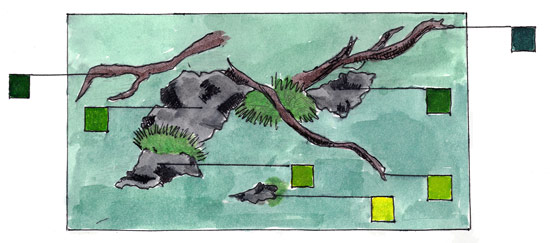
Layouts
There are three common layouts;
- ‘The U Shape’
- ‘The Triangle’
- ‘The Island’
- *Update* The new ‘Linear Layout’ created by James findley. Read about it here »
‘The U-Shape’
The negative, or open space, will be in the centre of the aquarium. Alternatively if you are using the rule of two thirds, it will be off centre. There will be higher planting to the left and right hand sides of the aquarium.
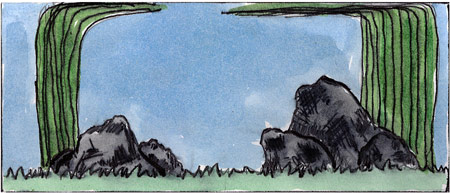
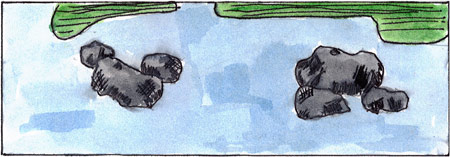
The Traditional Method…
When the negative space in the middle has been chosen, the next step is to select what plants to use and where to position them. This should be done carefully and several elements need to be considered in order to plant a successful scape. First, one should consider the growth habits of the plant; what height will it grow to, and how fast will it achieve that height. Thought should be invested in how the maintenance of the plants will be carried out; if you want the plant growth in one area of the tank to be at a height of 5cm, but choose a plant that grows very rapidly to 8cm, then you will be forever trimming and maintaining your tank, making it hard to maintain the ‘U’ shape and achieve your vision.
A New Way…
As with all art, especially relatively new artforms, trends have changed over the years and techniques have developed. The traditional technique is to use plants such as Glosstigma elatinoides, small Cryptocorne species like C. Parva and regularly pruned stem plants to create the ‘U’ shape. A relatively new and modern alternative to this is to use decorative sands and graded gravels in the place of Glossostigma, wood and stones to create the ‘U’ shape, and plants to soften the harsh edges of the hard-scape. This technique leads to a feeling of looking down a river or deep gorge enveloped in a tall, exotic canopy of wild green foliage.
‘The Triangle’
This is a successful compositional layout in cases where the tank is in the corner of the room and viewing angles are restricted. It consists of planting the area of the tank in the corner of the room, by the wall, and then gradually reducing the height of the planting as it moves further away from the wall, as though the plants are naturally creeping in towards your living space.
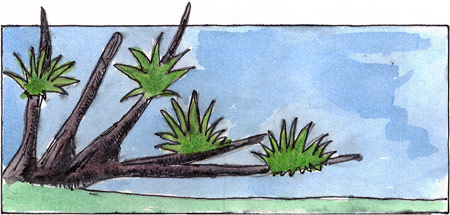
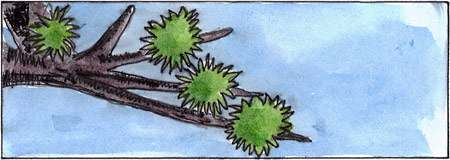
Thirds
Despite the apparent simplicity of this arrangement, careful consideration is needed. The first thing to consider is the negative, or open, space. With this layout the Golden Ratio or rule of two thirds are often used, with plants making up two thirds of the space and the final third being left as negative space. A further tip is to utilise triangles throughout the scaping of the tank to highlight the composition and dimensions. For example, wood or stones are often used to counter balance the triangular planting of this design by pointing them in the opposite direction; often up into the far/top corner in the open area. This style lends itself to an open sand area for Corydorus sp and brings a spacious feel to an aquarium.
Planting
The second thing to be considered is the choice of plants. For manageable maintenance, and optimum success, ensure that plants are chosen with an eye to maintaining desired height levels; stem plants are few and far between in this arrangement due to their growth habits. Where they are used, they are in the corner of the aquarium where the planting is at its greatest height.
The Island
This is the least commonly used layout, and is often only used by aquarists who have a large aquarium to plant. The style is fairly self explanatory; all the main hardscape and planting is in the centre of the tank, and the height radiating from high in the centre to lower on the edges. Triangles are also used in this design, but in more dynamic ways.
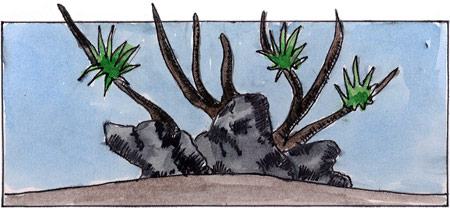
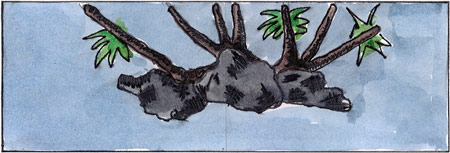
Planting
Stem plants often give the main body of height with more long term plants such as Cryptocorne species providing long term biomass. This is, of course, only a guide and could and should be adapted where desired. For example, it could be adapted for an Iwagumi design, using low growing plants and using the hard scape and the height of the substrate to provide the island shape. This style is one of the few that allows you to position the island in the centre of the aquarium, but it can also be placed off-centre depending on your desired style. It should be noted, however, that although the island can be central it is best to avoid dominant stones, wood or plants being central.
Maintenance
Good aquascaping tools really do make a difference! Aquascape Pro do a whole range of professional tools at very reasonable prices – starting at around just £11. Their Pinsettes and Scissors come in a range of sizes and are very useful for effective, precise maintenance of your Nature Aquarium Layout.
Like this article? More articles by The Green Machine that might interest you are;
- Graded Sands and Gravels: A Guide
- Grading Gravels to Replicate Nature
- Working with Carpeting Plants and Grasses
- Iwagumi Aquascapes: An Introduction
- 60cm Triangular Aquscape Layout Design
- 80cm Jungle Aquascape Layout Design
- 60cm Aquascape Layout Plan
If you would like more help and advice please contact us now, or phone us on 01978 265 090. We have already helped thousands of people learn to aquascape and we are still counting!

Very nice
You had me at “Golden Ratio”. 🙂
Very nice